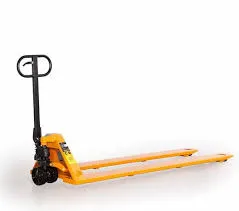


Chain Blocks and Lever Blocks Mechanisms of Motion and Power
In the realm of mechanical engineering and material handling, two types of block systems have gained significant prominence chain blocks and lever blocks. These devices, often utilized in factories, construction sites, and maintenance operations, are essential for lifting heavy loads with efficiency and safety. Understanding their mechanisms, applications, and differences can provide valuable insights into their utility in various industries.
Chain Blocks The Power of Chain Mechanism
Chain blocks, also known as chain hoists, operate on the principle of the mechanical advantage provided by a chain. They consist of a chain that wraps around a set of gears, connected to a hoisting mechanism. When the chain is pulled, it rotates the gears, which in turn lift the load attached to the hook of the block. This system allows for heavy objects to be raised with minimal physical effort from the operator.
The design of chain blocks primarily allows them to lift vertically and is particularly effective for lifting loads in confined spaces. One of the primary advantages of using a chain block is its capacity to handle substantial weights, often exceeding several tons, depending on the model. Chain blocks are commonly used in shipping, manufacturing, and construction, where heavy items need to be raised and positioned accurately.
Moreover, chain blocks are designed for durability and are built to withstand harsh work environments. They are often constructed from high-strength materials such as steel, ensuring that they can endure the wear and tear of daily use. The versatility of chain blocks makes them indispensable in various scenarios, from lifting engines in a garage to hoisting heavy steel beams during construction.
Lever Blocks The Smooth Motion of Leverage
Conversely, lever blocks, or lever hoists, operate based on the principle of leverage. A lever block features a ratchet mechanism and a hand-operated lever that allows users to lift and pull loads by exerting force on the lever arm. The advantage of this system lies in its ergonomic design, enabling the exertion of less effort for lifting compared to the weight of the load.

The leverage mechanism works by multiplying the applied force, making it easier to lift heavy objects. Lever blocks are especially popular in scenarios where precision and control are paramount. They are often employed in circumstances where loads need to be moved horizontally or vertically over short distances, such as in rigging or load securing.
One of the key features of lever blocks is their portability. They are typically smaller and lighter than chain blocks, which makes them easier to transport and use in tight spaces. Lever blocks are commonly used in industries like automotive repair, construction, and warehousing, functioning effectively for tasks ranging from pulling and positioning large items to securing loads during transport.
Chain Blocks vs. Lever Blocks Choosing the Right Tool
While both chain blocks and lever blocks serve the fundamental purpose of lifting heavy loads, the choice between the two depends on specific requirements of the task at hand. Chain blocks are ideal for vertical lifting of heavy weights in fixed locations. For instance, when working in a factory setting where heavy items need to be lifted to assembly lines, chain blocks excel due to their high weight capacity and fixed mounting.
On the other hand, lever blocks are preferable for tasks that require greater maneuverability and control. In scenarios where adjustments need to be made frequently or where space is limited, lever blocks shine. Additionally, the ease of use and portable nature of lever blocks make them a favorite among those who need a versatile lifting solution without compromising on power.
Conclusion
In conclusion, both chain blocks and lever blocks play a vital role in material handling across various industries. Understanding their mechanisms and applications allows users to select the right tool for their specific needs. Whether it’s the heavy-duty capability of chain blocks or the portability and leverage provided by lever blocks, these devices are fundamental in enhancing efficiency and safety in lifting operations. The evolution of these tools continues to shape how lifting and handling are performed, promoting innovation and safety in the workplace.



